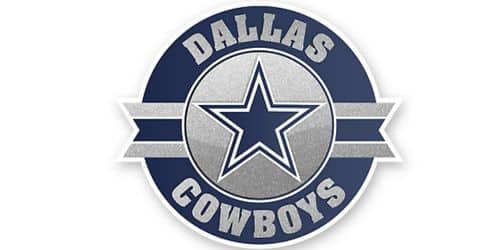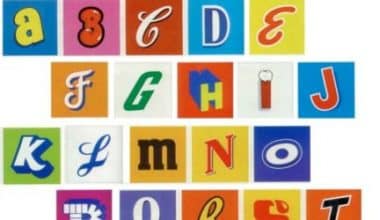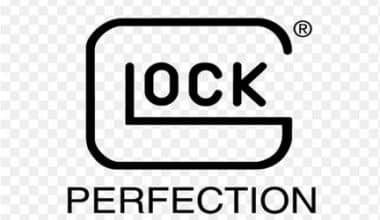The Dallas Cowboys are a legendary American football team, having played since 1960. It was founded and accepted into the NFL’s National Football Conference. This article talks about the history of the Dallas Cowboys or “Cowboy” logo.
Overview of the Dallas Cowboys Logo
The Dallas Cowboys is an American football team based in Arlington, Texas. In 1960, the team joined the National Football League and competed in the National Football Conference East Division. It was created by a group of investors who shared stock ownership. John Murchison (45%), Clint Murchison, Jr. (45%), William Hawn (5%), Bedford Wynne, and Toddie Lee (5%) as substantial shareholders, and William Hawn (5%), Bedford Wynne, and Toddie Lee (5%) as minor shareholders.
There were no NFL teams in areas south of Washington prior to the founding of the Dallas Cowboys club. D.C. Lamar Hunt, an American businessman recognized for his attempts to promote sports in the country, tried unsuccessfully to bring a National Football League team to Dallas.
In 1959, he established the American Football League and founded the Dallas Texans football franchise. Because of the presence of the AFL club in Dallas, NFL executives easily approved Clint Murchison’s proposal for a franchise in Dallas. The owner of the Washington Redskins, George Preston Marshall, actively opposed this decision because he wanted the Redskins to retain the NFL’s southernmost team.
Additional Information
Clint Murchison needed authorization from all team owners before he could join the League. Marshall’s opposition compelled Murchison to devise a devious strategy to persuade his opponent to alter his mind and agree to Dallas being awarded an NFL club. Around the same time, Marshall clashed with Barnee Breeskin, the Redskins bandleader and owner of the rights to the team’s official fight song “Hail to the Redskins.” Knowing about Clint Murchison’s issues, Barnee Breeskin secretly sold him the rights to the Washington fight song, preventing Marshall from playing it during games. The new franchise threatened Marshall and agreed to return the song’s rights in exchange for Marshall voting for the Dallas-based club. That is how the Dallas Cowboys came to be.
The Dallas Cowboys’ formal birthday is January 28, 1960. The team was originally named the Dallas Steers, but Texas Schramm, the franchise’s general manager, rejected the name, stating that steer stood for castrated male cattle. Due to a drop in oil prices, Murchison was forced to sell the squad to an investment company led by Bum Bright in 1984. During the 1989 financial crisis, the franchise was given to the FSLIC insurance firm; later, Jerry Jones purchased it for $140 million.
Dallas Cowboy History
The Dallas Cowboys are a great NFL team that has made it to the Super Bowl eight times over the years, which is a very outstanding result. Although the club’s first two decades in the league were rather quiet, they began to display their true strength and character in the early 2000s.
The club has also established NFC records, having won eight National Football Conference championships, the most of any NFC team. The Dallas Cowboys also set a financial milestone by becoming the first baseball team with great value at $4 billion USD.
The Dallas Cowboys are a professional football team in Dallas, Fort Worth, and Arlington. It was founded in early 1960 and immediately entered the National Football League. However, it is now the only NFL team to have won 20 consecutive games. It is also the world’s most costly sports team with a $4 billion prediction in 2015.
1960 — 1963
The Dallas Cowboys franchise had its first logo in 1960. But the change didn’t make a big difference because the artists took a conservative approach and kept the original drawing and only added two shapes. This happened in 1964. After that, the club’s owners thought the renovation was done and didn’t try to change the style anymore. The club has only used two logos since its inception. Both badges include a blue five-pointed star, a nod to Texas’s heritage as the “Lone Star State.” It represents the struggle for Texas’ independence from Mexico and national unification.
The Dallas Cowboys are one of the few teams whose logo has stayed almost the same since it was first made. The team’s symbol has been a blue five-pointed star since its inception.
1964 — Today
The logo underwent a relatively modest stylistic change in 1964. Jack Escridge enhanced the star’s 3D appearance by adding a white border along its contour.
Because the team is based in Texas, often known as the Lone Star State, the logo has state-wide importance and pays homage to Texas’s past. Many experts and football enthusiasts believe that the Dallas Cowboys emblem has an immense unifying power, which they experience every time they attend a game featuring the team.
Anniversary Symbols
Designers frequently create special versions of the logo that appear more intricate than the ordinary ones to commemorate the team’s anniversary. For example, the Dallas Cowboys logo, designed to commemorate the team’s 25th anniversary, featured three stars and unique visual elements. Instead of just “Cowboys,” they included the club’s complete name and the words “Silver Season.”
Shape
You can find the star on a variety of items, including helmets, T-shirts, and coins. It contributes to the Dallas Cowboys’ logo becoming more iconic and identifiable. The Dallas Cowboys’ blue star emblem is one of the most well-known franchise logos in professional sports, representing Texas as “The Lone Star State.” The blue star was initially solid till 1964 when a white line and blue border were applied to it. Since then, the logo has not changed. Currently, the owner of Jerry Jones’ AFL franchise, the Dallas Desperados, which has a similar emblem to the Cowboys, also wears the blue star. The blue star is also on entries like “storage facilities” and “imaging facilities.”
Their Uniform
The white home jersey of the Dallas Cowboys features royal blue (PMS 287 C) solid stockings, numbers, writing, and two black-outlined stripes on the sleeves. The home pants are a typical metallic silver-green (PMS 8280 C) hue that complements the blue in the uniform. The navy (PMS 289 C) road jerseys (dubbed the “Stars and Stripes”) contain white text and numbers on navy pinstripes. Each sleeve and collared V-neck have a white/gray/white stripe with a Cowboys star emblem. Directly behind the NFL shield is a “Cowboys” breast crest. The away pants are a pearlish metallic-silver color (PMS 8180 C), complementing the navy in the outfits. The lettered player surnames on the jersey nameplates are in a serif typeface.
Metallic Silver Blue (PMS 8240 C) is the name of the team’s helmets which has a unique silver with a blue tint/white/blue vertical stripe on the crown. The Cowboys also incorporate a distinctive, albeit modest, element on the rear of the helmet: a blue strip of Dymo tape with the player’s name imprinted, positioned on the white side of the stripe.
Colors
PMS 661 C for royal blue, PMS 282 C for blue, PMS 8240 C METALLIC for silver, and PMS 8280 C METALLIC for silver-green are the Dallas Cowboys NFL franchise Pantone colors. Dallas Cowboys Pantone color is royal blue. The club’s emblems are only blue. It represents greatness, power, endurance, purity, strength, and integrity.
Font
The developers chose the main motif for the logo with great care. The painters’ meticulous depiction of the blue five-pointed star recalls Texas’s historical past – the so-called Lone Star State. It is most likely a copy of the Texas flag, which represents the union of the United States, the state of Texas, and God. The star now represents the entire state of Texas and is a symbol of the national community.
Except for the main portion, the Dallas Cowboys logo contains no other visuals or inscriptions. The creators chose to emphasize the five-pointed star from the state flag. If it was white in the original, it was dark blue here to play with contrast. Before 1964 the team didn’t make use of White. It also has a wide line along the inner contour after the remodeling.
Various Symbols
The team utilized an insignia picturing a polo player in addition to the star logo. The 1960 version, in blue and white, showed a cowboy riding a horse while carrying a football. The 1966 insignia was more colorful, with light blue, black, red, and white. Except for a few details like the direction, the player and his horse haven’t changed much (now they were facing to the right).
Details on the Dallas Cowboy Logo History (1960-Present)
The Dallas Cowboys are an American football professional team in the Dallas-Fort Worth metropolitan area. The team is based in Frisco, Texas, and has played its home games since 2009 at AT&T Stadium in Arlington, Texas. He is the team’s ninth player. McCarthy takes over for Jason Garrett, who was the team’s coach from 2010 until 2019.
The NFL’s record of consecutive sell-outs may best symbolize the team’s national following. The team has appeared in the Super Bowl eight times, tying it with the Pittsburgh Steelers and the Denver Broncos for the second most in history, trailing only the New England Patriots record of eleven appearances.
This has also resulted in eight NFC titles, the most in NFC history. The Cowboys have won some Super Bowls, tying them with their NFC rivals, the 49ers. Both are third to Pittsburgh and New England’s six Super Bowl wins. The Cowboys have had 20 straight winning seasons (1966–1985), missing the playoffs only twice (1974 and 1984).
During the Clint Murchison/Harvey Bright Era (1960-1988)
After two businessmen sought and failed to obtain Dallas a team in the NFL, Lamar Hunt formed the American Football League with a group of owners, prompting the NFL to expand beyond twelve teams. In 1958, Murchison attempted to buy the Washington Redskins from Marshall with the intention of transferring them to Dallas.
An agreement was reached, but just as the contract was about to be consummated, Marshall demanded a modification in conditions, which enraged Murchison and caused him to back out of the arrangement. Marshall then opposed Murchison receiving a franchise in Dallas. Marshall’s position would preclude Murchison from joining the league because NFL expansion required unanimous consent from team owners at the time.
More Details on the Dallas Cowboys History
Marshall had a falling out with Redskins bandleader Barnee Breeskin, who wrote the music for the Redskins fight song “Hail to the Redskins,” for which Marshall’s wife wrote the lyrics. Breeskin controlled the song’s rights and was well aware of Murchison’s quest for an NFL team. Angry with Marshall, Breeskin approached Murchison’s attorney about selling him the rights to “Hail to the Redskins” before the expansion vote in 1959; Murchison subsequently purchased the song for $2,500.
Before the 1959 franchise referendum, Murchison told Marshall he owned the song and forbade him from performing it. Murchison sold Marshall the rights to “Hail to the Redskins” in exchange for his vote against obtaining a franchise, with a rivalry.
Murchison hired former Los Angeles Rams general manager and CBS Sports executive Tex Schramm as team president and general manager, San Francisco 49ers scout Gil Brandt as head of player personnel, and New York Giants defensive coordinator Tom Landry as head coach, forming a triumvirate that would lead the Cowboys’ football operations for three decades.
Years With Tom Landry (1960-1988)
The Cowboys struggled at first, as did other expansion clubs. In their first season, they did not win a single game. Landry, on the other hand, gradually restored the team’s reputation. They finally broke.500 in 1965. However, they broke through a year later, winning the Eastern Conference championships in 1966 and 1967.
Also, they lost both NFL Championship Games to the Packers, the second time in the “Ice Bowl.” In 1968 and 1969, when the NFL adopted a divisional arrangement, they won consecutive division crowns but lost in the playoffs to Cleveland.
The Cowboys won 105 regular-season games from 1970 to 1979, more than any other NFL team during that time period. They also competed in five Super Bowls, winning two of them (1971 and 1977).
The Cowboys were 10-4 in 1970, led by quarterback Craig Morton. They beat Detroit 5-0 in the lowest-scoring playoff game in NFL history, then beat San Francisco 17-10 in the first-ever NFC Championship Game to qualify for their first Super Bowl appearance in franchise history, a mistake-filled Super Bowl V they lost 16-13 to the Baltimore Colts on a field goal by Colts’ kicker Jim O’Brien with five seconds left.
Years Spent by Jimmy Johnson (1989-1993)
Jones fired Tom Landry, the only head coach in the team’s history, and hired Jimmy Johnson, who was the head coach at the University of Miami. The latter was also Jerry Jones’ defensive lineman partner at the University of Arkansas. Johnson’s job brought him back in touch with Michael Irvin, a second-year wide receiver who used to play for Miami.
The Cowboys took UCLA quarterback Troy Aikman with the top pick in the draft. Later that year, they traded Herschel Walker for five veterans and eight draft picks. Despite finishing 1-15 in 1989, Dallas was able to draft impact players to rebuild after “The Trade.”
Johnson promptly restored the Cowboys to the top of the NFL standings. The new talent joined Landry-era holdovers Michael Irvin, Nate Newton, Ken Norton Jr., Mark Tuinei, Jim Jeffcoat, and seasoned arrivals Jay Novacek and Charles Haley.
Things began to improve for the franchise in 1990. In Week 1, Dallas defeated the San Diego Chargers 17-14 for their first home victory since September 1988. They lost 2-7 in their next nine games before winning four of their last six to finish the season with a 7-9 record in fourth place.
In 1991, the Cowboys replaced offensive coordinator Dave Shula with Norv Turner, and the team surged to a 6-5 start before defeating the previously unbeaten Redskins, despite Troy Aikman’s injury. The Cowboys finished 11-5 after backup Steve Beuerlein took command. The Cowboys defeated the Bears 17-13 in the wild-card round, giving them their first playoff victory since 1982. The Lions annihilated them 38-6 in the divisional round.
Years Spent By Gailey and Campo (1998-2002)
Dallas finished 8-8 in 1999 (during which Irvin sustained a career-ending spinal injury in a loss to the Philadelphia Eagles) and lost in the wild-card playoffs for the second time (this time to the Minnesota Vikings, 27–10).
Dave Campo, the defensive coordinator, was elevated to head coach for the 2000 season. Deion Sanders, the team’s starting cornerback, was released prior to the season after five seasons with the team. Later, he joined division rival Washington. They were defeated 41-14 by Philadelphia in Week 1.
That game cost veteran quarterback Troy Aikman his career after he suffered a serious concussion. For the remainder of the season, veteran NFL quarterback Randall Cunningham stepped in for Aikman at quarterback. With a 5-11 record, the Cowboys finished fourth. Emmitt Smith’s 10th consecutive 1,000-yard rushing season and a season sweep of the Redskins were the only highlights of 2000.
In 2001 of Dallas Cowboys’ History
2001 was yet another difficult year in Dallas. Aikman was released from the team before the season began and retired due to concussions. Jerry Jones signs a quarterback for Tony Banks. Banks had started half of the season for the Super Bowl champion Baltimore Ravens the year before he was benched.
Jones selected QB Quincy Carter in the second round of that year’s draft, and Banks was released during the preseason. That season, Ryan Leaf, Anthony Wright, and Clint Stoerner all competed for the position of quarterback. Dallas finished 5-11, last in the NFC East, but swept the Redskins for the fourth time in a row.
Dallas selected safety Roy Williams with the 8th overall pick prior to the 2002 season. The Cowboys opened the season with a 19-10 loss to the expansion Houston Texans in Week 1. On October 28, 2002, during a home game against the Seattle Seahawks, Emmitt Smith broke Walter Payton’s all-time NFL rushing record.
Their victory over the Redskins on Thanksgiving marked their tenth consecutive victory over Washington. However, that was their only win of the season; Dallas went on to finish with a 5-11 record. The losing streak culminated in a 20-14 loss to Washington in Week 17.
Years Under Bill Parcells (2003-2006)
Jones then enticed Bill Parcells out of retirement to return to the Cowboys’ coaching staff. The Cowboys were the surprise team of the 2003 season, starting 7-2 but finishing 3-4. With a 10-6 record, they clinched the second NFC wild-card spot, but they were defeated in the Wild Card round by the eventual conference champion Carolina Panthers, 29-10.
Dallas was unable to repeat its 2003 success, finishing 6-10. Quincy Carter was released during the preseason, and Vinny Testaverde took over at quarterback.
Dallas started the 2005 season 7-3 but finished third with a 9-7 record. They signed veteran Drew Bledsoe as their starting quarterback prior to the start of that season.
The Cowboys had an eventful season in 2006. They signed free agent wide receiver Terrell Owens, who was talented but divisive, prior to the season. [20] The Cowboys started 3-2. During a Week 7 game against the Giants, Bledsoe was pulled from the game and replaced by backup Tony Romo, who had been struggling since the beginning of the season.
Dallas was defeated 38-22 as Romo was unable to save the game. On the other hand, Romo was named the team starter and went 5-1 in his first six games. Dallas finished the season in second place with a 9-7 record. They were successful in securing the fifth playoff seed. Wade Phillips took over for Parcells after the season.
Mike McCarthy’s Career (2020-Present)
Following the conclusion of the 2019 season, in which the Cowboys missed the playoffs for the seventh time in the last ten years, the franchise announced the departure of longtime head coach Jason Garre.
McCarthy and the Cowboys won their first game of the season in Week 2 against the Atlanta Falcons. On October 11, quarterback Dak Prescott suffered a serious ankle injury that ended his season, effectively ending the Cowboys’ 2020 season. Despite losing Prescott, McCarthy’s first-year Cowboys were still in contention for a postseason spot for most of the regular season.
They finished the season with a 6-10 record, placing third in the NFC East Division. The Cowboys’ defense struggled a lot during the 2020 season. Mike Nolan, the defensive coordinator, and Jim Tomsula, the defensive line coach, were fired following the season. A $2.4 million settlement was paid on February 16, 2022, after four cheerleaders accused Rich Dalrymple, the now-retired senior vice president of public relations and communications, of voyeurism in their locker room while they undressed at an event at AT&T Stadium in 2015.
The Cowboys became the first team to seek blockchain sponsorships when the NFL authorized teams to do so, striking a multi-year partnership with the platform Blockchain.com on April 13, 2022.
Why Is the Dallas Cowboys Logo a Star?
The Cowboys’ emblem, like many other Texas-based organizations’ badges, is based on an image of a star, as Texas is known as “The Lone Star State.” The Dallas Cowboys logo has a blue and white star that is both distinctive and powerful.
What Is the Dallas Cowboys Symbol?
The Texas state flag also contains a single star, and Dallas is home to the Dallas Stars hockey franchise. The star represents unification, while the color blue represents tranquillity and peace, serving as a reminder to exercise good sportsmanship.
When Did the Cowboys Change Their Logo?
In 1964—The Blue and White Logo: The Dallas Cowboys revamped their logo after three years. It was only a white line running along the curves of the star. With this change, the star is more visually appealing.
Why Do the Cowboys Have Different Shades of Blue?
The Cowboys’ blue-jersey saga dates back to the early 1960s when the National Football League modified its policy requiring home teams to wear dark jerseys. For home games, the new policy enables the home team to choose its preferred shirt color.
Which Football League Squad Has the Most Devoted Followers?
The Dallas Cowboys have had the largest fan base in the NFL, at 8.45 million, and the highest market value in the NFL for the past 12 years. In addition to being a popular spectator sport in the United States and around the world, the National Football League (NFL) has become a cultural institution for its fans.
What Does the Star in Texas Stand For?
The Texas Flag Code says that the colors of the Texas flag stand for the following: blue means loyalty, white means purity, and red means bravery. The code also says that the single (lone) star “represents all of Texas and stands for our unity as one for God, State, and Country.”
Conclusion
The Dallas Cowboys is a professional football team in the United States, founded in 1960. The team is now a part of the National Football League’s East Division. Since 2009, the Dallas Cowboys have called AT&T Stadium in Arlington, Texas home, and Mike McCarthy has served as head coach since 2020. They also play very well in their matches.
Related Articles
- MARK CUBAN NET WORTH 2023: How Did He Get So Rich?
- Boot Brands: The Comprehensive Best 2023 Picks.
- FAST FOOD FRANCHISE: Costs & The Best 2023 Options to Own (Updated).
- NFL Pension: The 2023 Ultimate Guide (Updated)
- BUYING A FRANCHISE BUSINESS: Benefits, What to Look For & Best Practices
- 10K FRANCHISES: Best Top Picks for 2023 (Updated)






